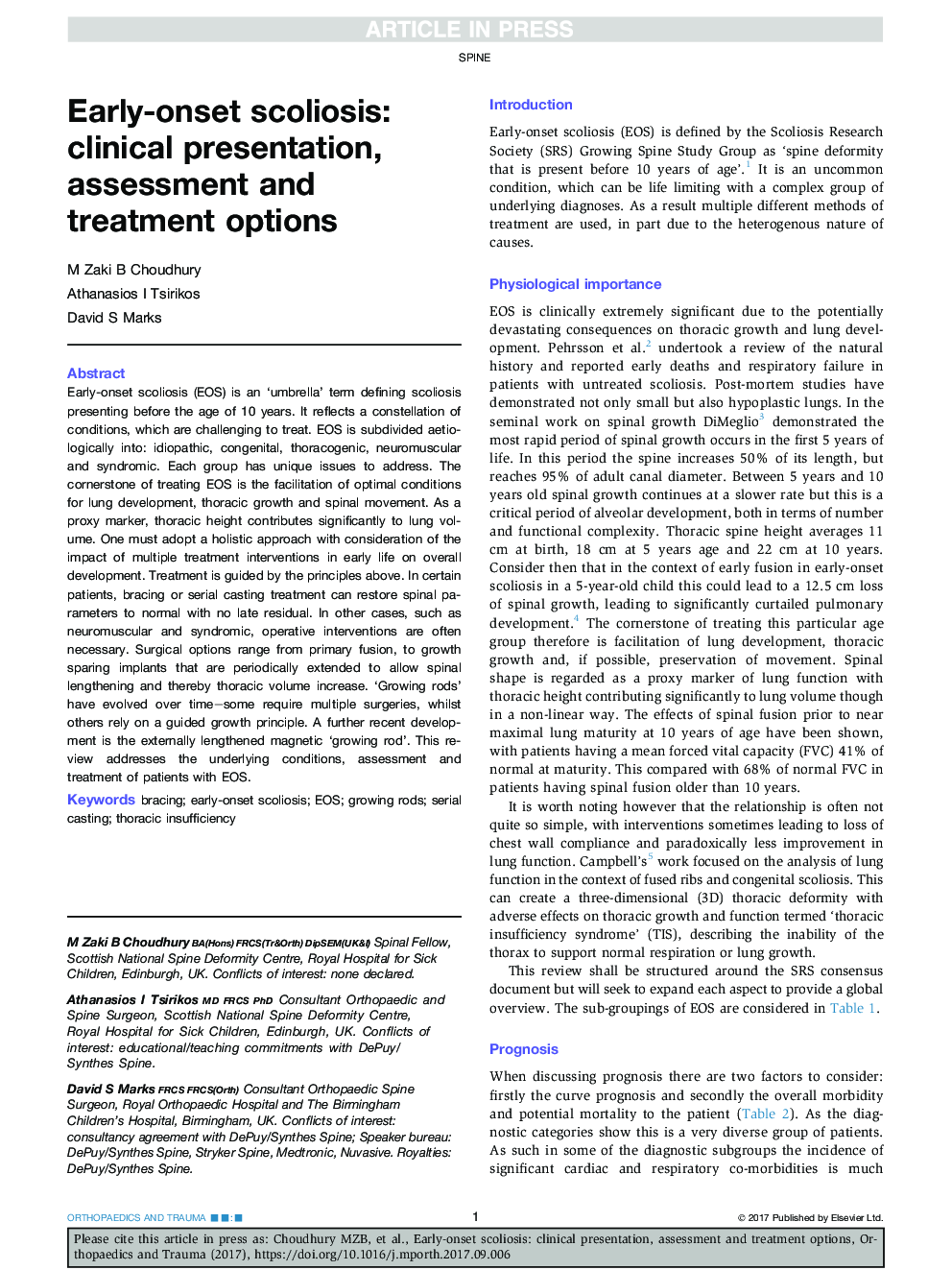| Article ID | Journal | Published Year | Pages | File Type |
|---|---|---|---|---|
| 8801990 | Orthopaedics and Trauma | 2017 | 7 Pages |
Abstract
Early-onset scoliosis (EOS) is an 'umbrella' term defining scoliosis presenting before the age of 10 years. It reflects a constellation of conditions, which are challenging to treat. EOS is subdivided aetiologically into: idiopathic, congenital, thoracogenic, neuromuscular and syndromic. Each group has unique issues to address. The cornerstone of treating EOS is the facilitation of optimal conditions for lung development, thoracic growth and spinal movement. As a proxy marker, thoracic height contributes significantly to lung volume. One must adopt a holistic approach with consideration of the impact of multiple treatment interventions in early life on overall development. Treatment is guided by the principles above. In certain patients, bracing or serial casting treatment can restore spinal parameters to normal with no late residual. In other cases, such as neuromuscular and syndromic, operative interventions are often necessary. Surgical options range from primary fusion, to growth sparing implants that are periodically extended to allow spinal lengthening and thereby thoracic volume increase. 'Growing rods' have evolved over time-some require multiple surgeries, whilst others rely on a guided growth principle. A further recent development is the externally lengthened magnetic 'growing rod'. This review addresses the underlying conditions, assessment and treatment of patients with EOS.
Related Topics
Health Sciences
Medicine and Dentistry
Orthopedics, Sports Medicine and Rehabilitation
Authors
M. Zaki B. Choudhury, Athanasios I. Tsirikos, David S. Marks,
